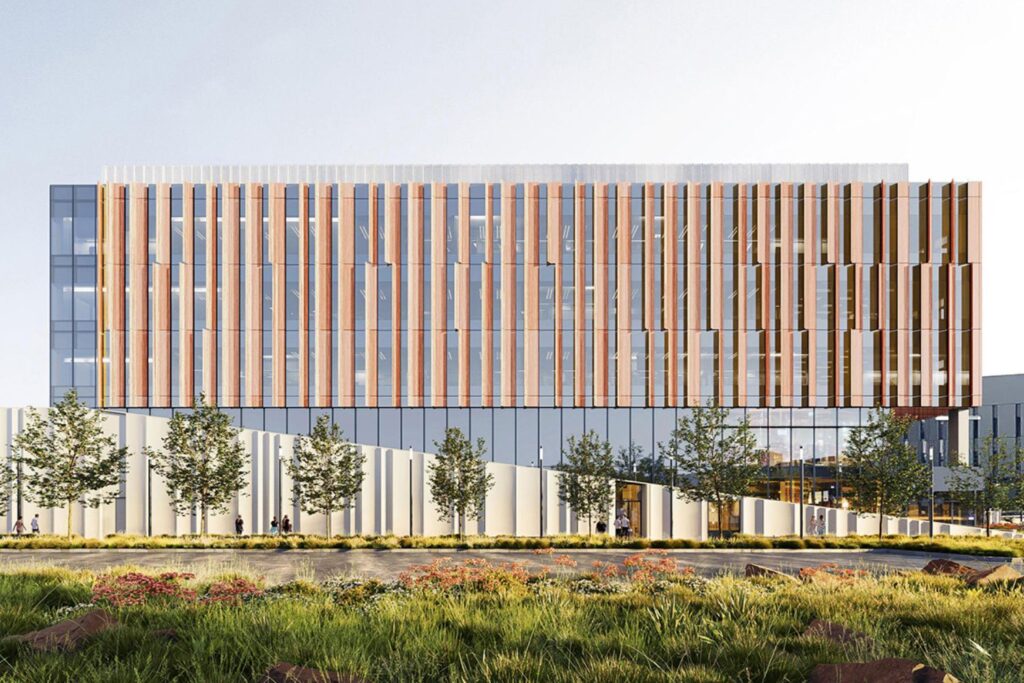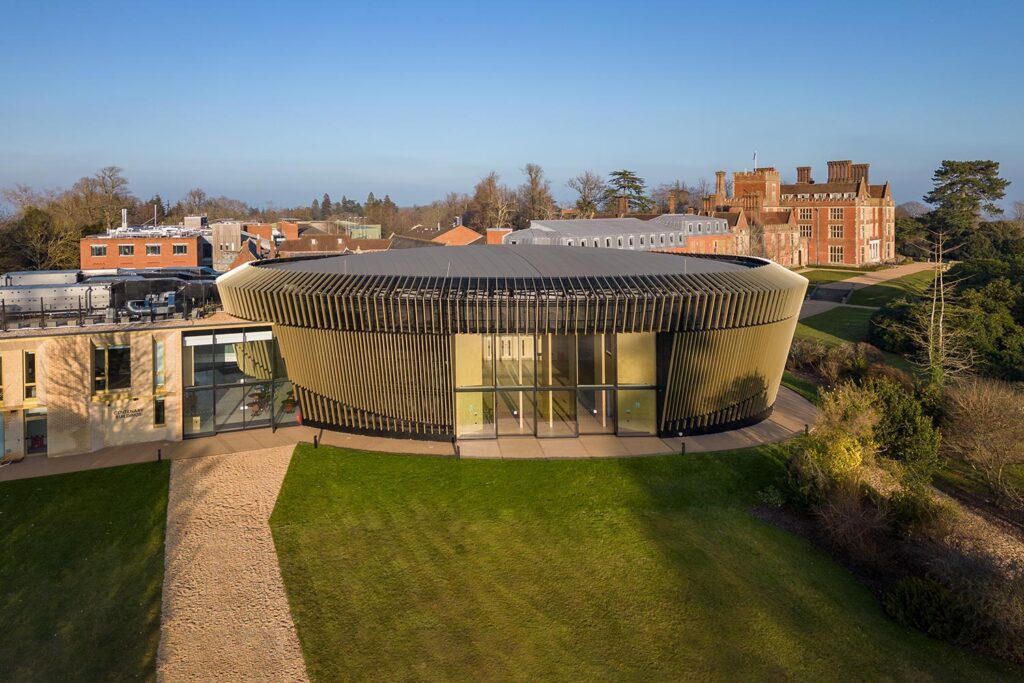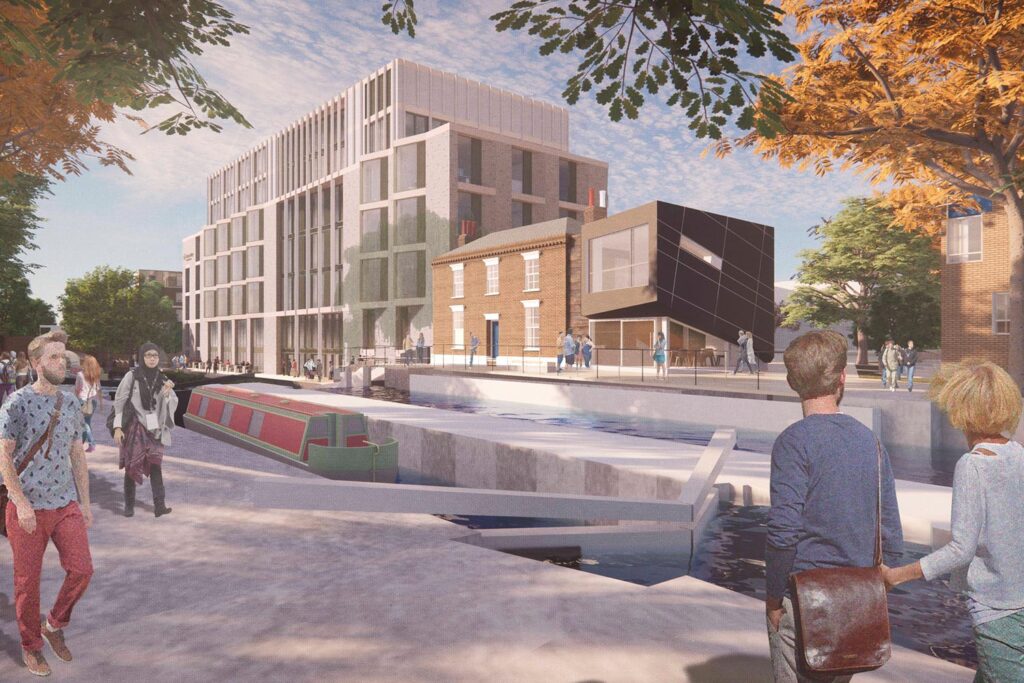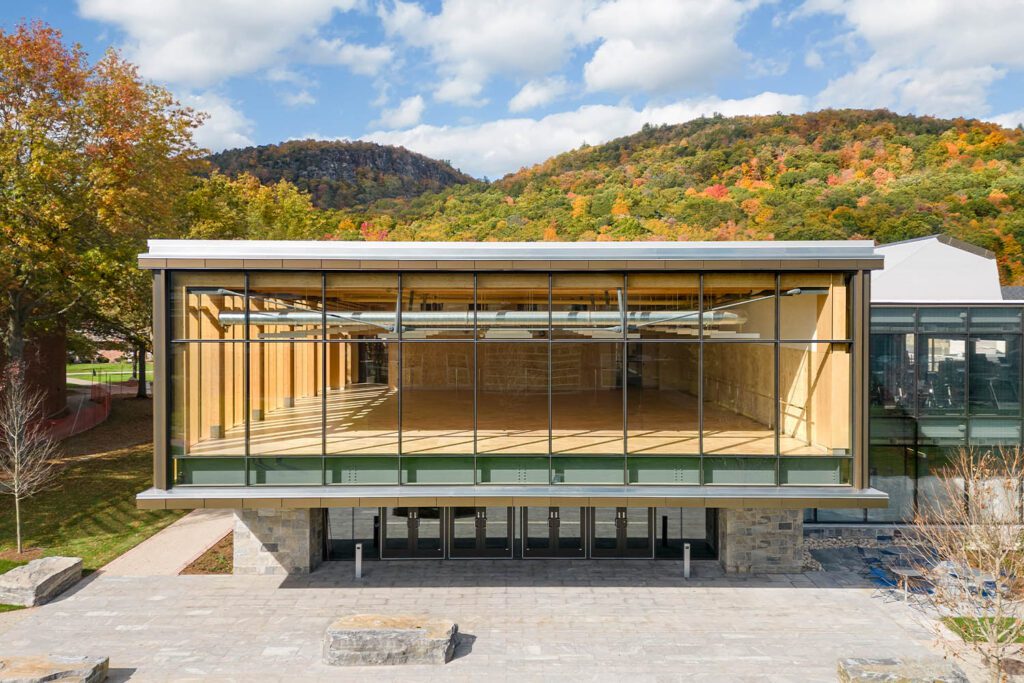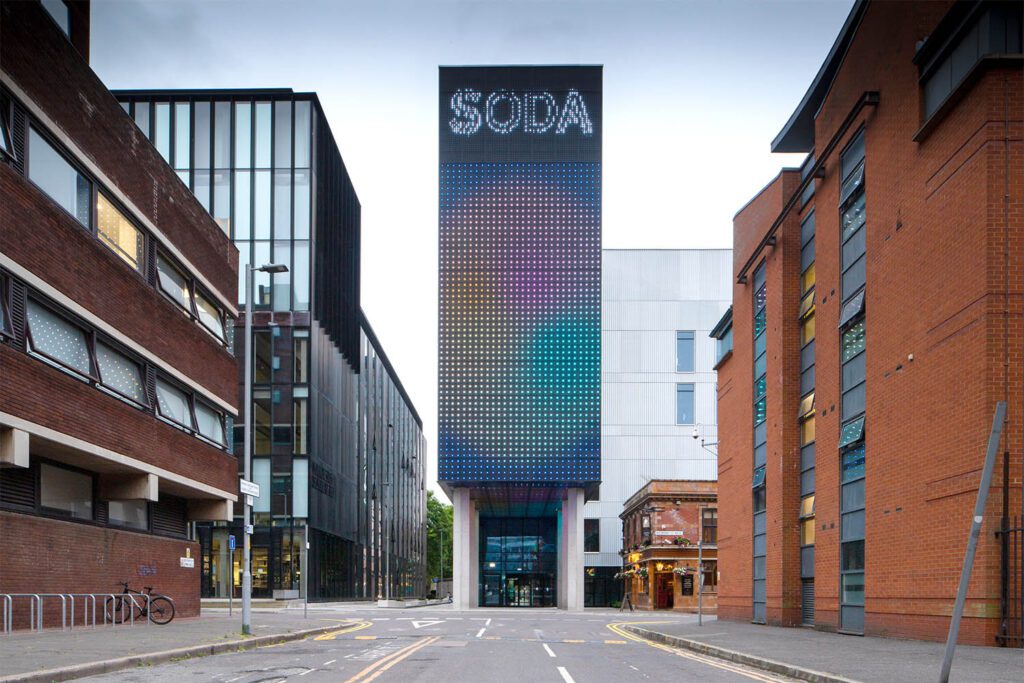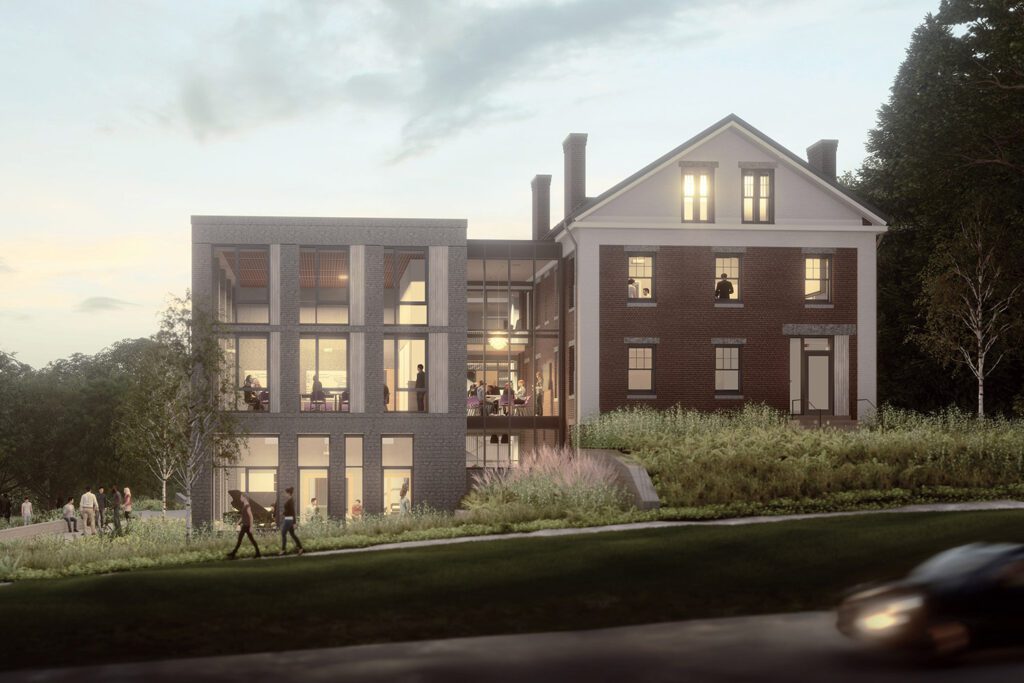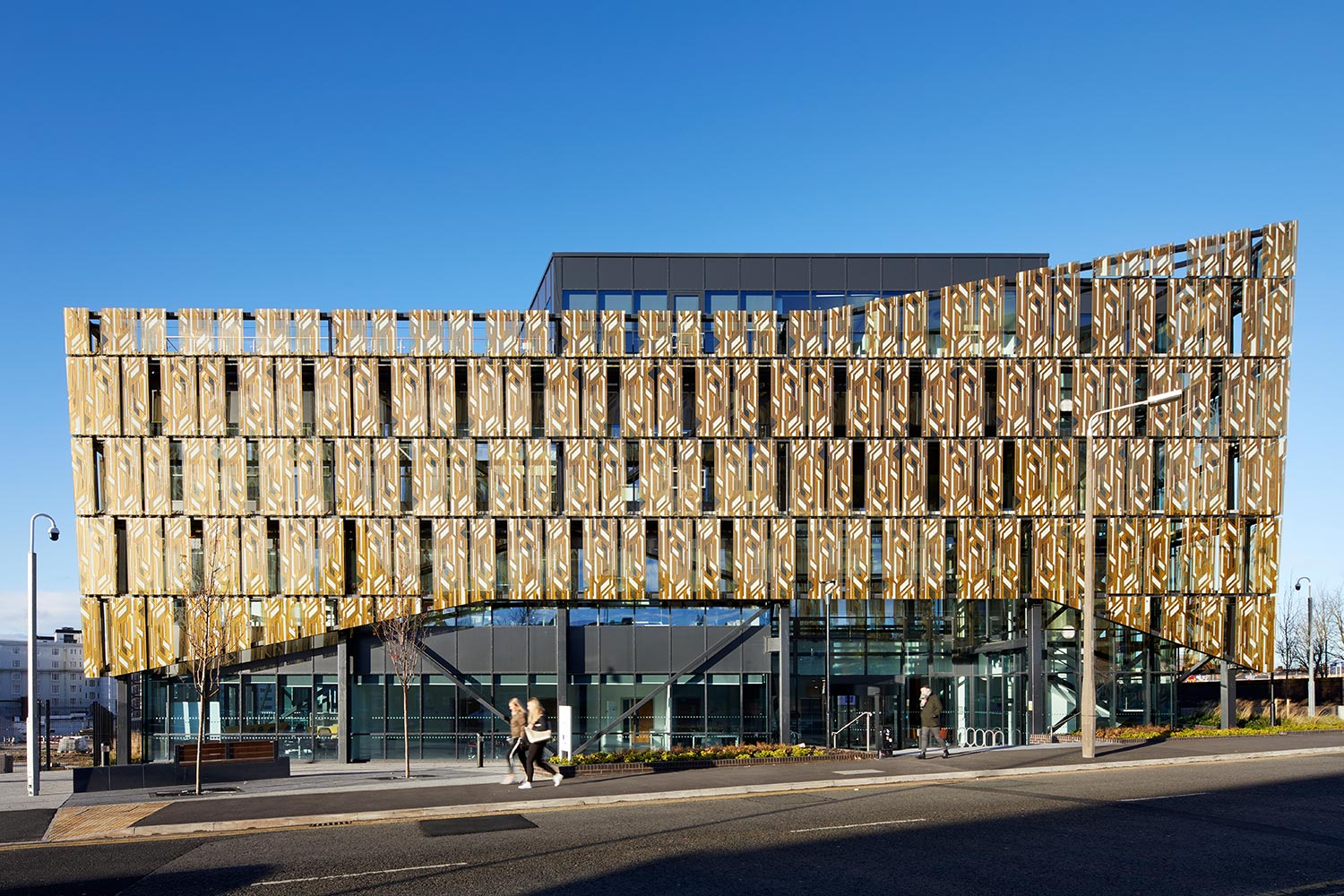
‘Fields of Gold’ at Sensor City
Liverpool, UK
Project details
Client
Liverpool John Moores University
Architect
IBI Group
Services provided by Buro Happold
The new technical innovation hub Sensor City is a central part of the flagship University Enterprise Zone.
A collaboration between University of Liverpool and Liverpool John Moores University, the development is a purpose built hub that unites industry and academia, providing a global platform for the promotion of sensor technologies.
The stunning Sensor City architectural glass facade features the artwork ‘Field of Gold’ by Julian Stocks. Created using ceramic fritted glass, the unique design symbolises the flow of sensor data from digital and analogue forms, and makes extensive use of a pallet of gold, significant as the material is often used in electronics as a conductor. Buro Happold was tasked with delivering solutions for the complex facade.

Challenge
The project incorporates a ‘double skin’ formation, with a glass wall featuring the Fields of Gold artwork sitting in front of the main building envelope. We needed to enable the architect to achieve an aesthetically impressive, continuous external surface, while also ensuring a structurally efficient system. This involved carrying out sensitivity studies on both the secondary steelwork and the glass screen, to develop a geometry that maximised the span of the glazing, with an efficient and safe glass design.
As well as its artistic significance, the double skinned facade also needed to provide environmental sustainability, by reducing solar heat gain within the building to minimise energy use and create a comfortable working space.

Solution
During the design stages of the project, a number of different possibilities were proposed for the intricate double skinned facade. One of the options considered to counter the effect of the facade load on the rest of the structure was to seal the cavity between the two layers with glass screens. Our team carried out analysis to establish whether this was a necessary addition.
We undertook a desktop wind study to determine the wind loads on the outer screen and steel envelope. The initial results suggested that the outer glass could potentially be affected by wind pressure building up in the cavity between the two layers. To investigate this further, our team engaged a test laboratory to undertake physical wind tunnel testing using a 3D printed model of the building. This demonstrated that the true wind load was actually 60% lower than the desktop studies suggested. As well as determining that the need cavity between the layers did not need to be sealed, these results also meant we were able to reduce the thickness of the glazing and remove the requirement for fully toughened glass.
To create a perceived depth within the ceramic frit pattern on the external skin, our team worked with the architect and the artist to develop a glass build up that incorporated multiple frits on different surfaces of the material. Due to the transparency of the glass, these different layers appear to float in front of one another, revealing extra levels of detail to the viewer as they get closer to the glazing.
We carried out detailed calculations to determine the optimum coverage of the artwork on the glass surface, while maintaining visual transparency through the external screen from inside the building.

Value
Achieving the client’s desire for Sensor City’s exterior to be as the interior, the stunning facade reflects the inspirational work that takes place within the building. Itself a result of innovative design and execution, Fields of Gold tells a story not of the limits to what is possible today, but of an excitement for what might be possible tomorrow.




